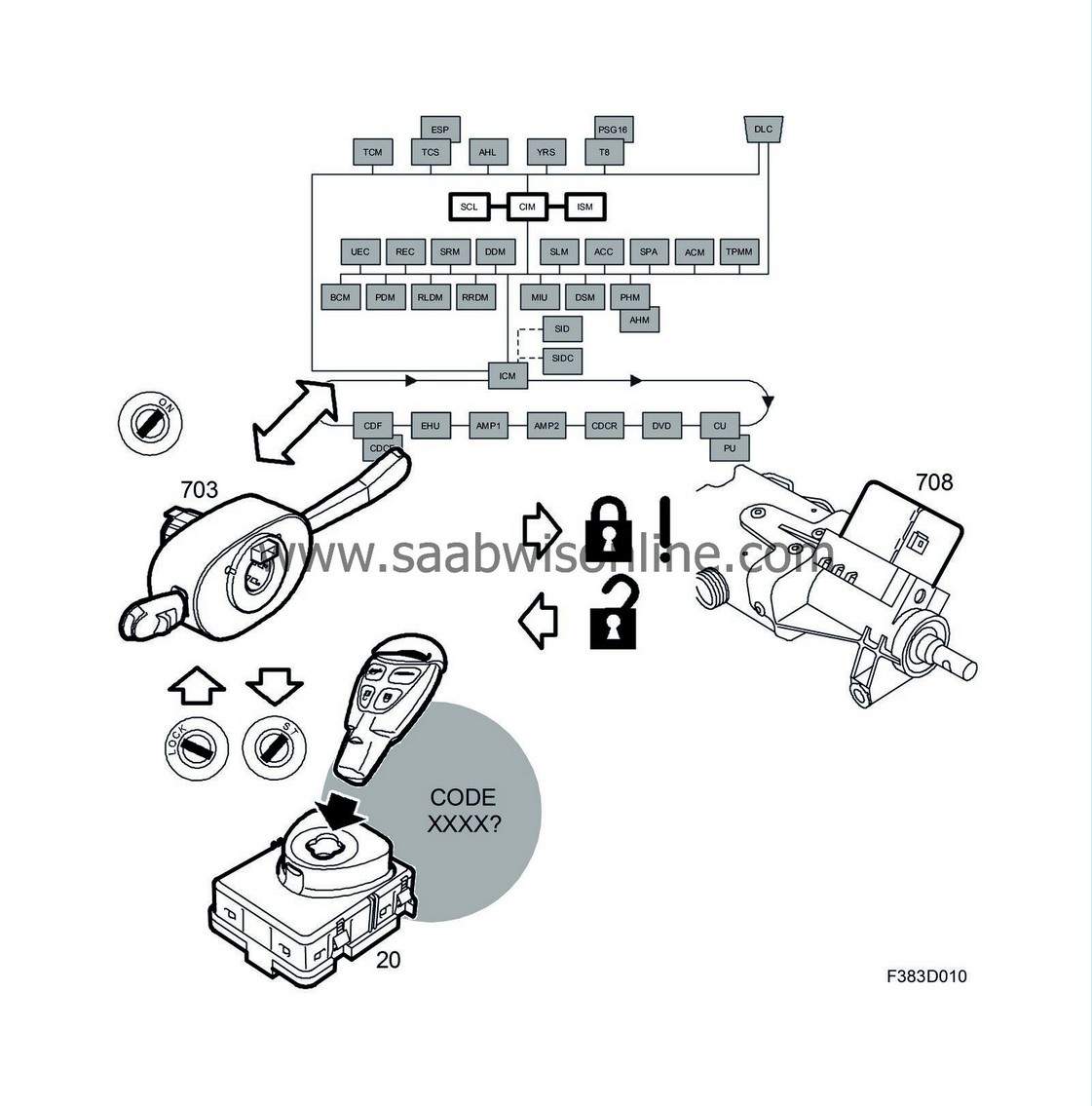Ignition switch, detailed description
| Ignition switch, detailed description |
As soon as the key is inserted, ISM will transmit the key position continuously to CIM on the communication cable. CIM then conveys the key position to the P and I-buses. The infotainment control panel (ICM) also makes it available on the O-bus.
CIM also generates +54 as a bus signal. This is active in key position ON but not ST and is used by the body control module (BCM) to operate a relay in the instrument panel fuse signal.
The P-bus control modules are wired for +15 directly from ISM. +15 receives battery voltage only in positions ON and ST. There are also three relays that are activated directly by the lead from +15, one in each fuse box. All the control modules on the O-bus and I-bus depend on the key position transmitted by CIM and are not wired for +15 (except the airbag control module on the I-bus).
Besides separate leads for B and +15, there is also one for +X, which is energized in positions ON and OFF. +X is connected to the engine control module (T8/PSG16) for activating the fuel pump so that it can build up pressure at an early stage.



